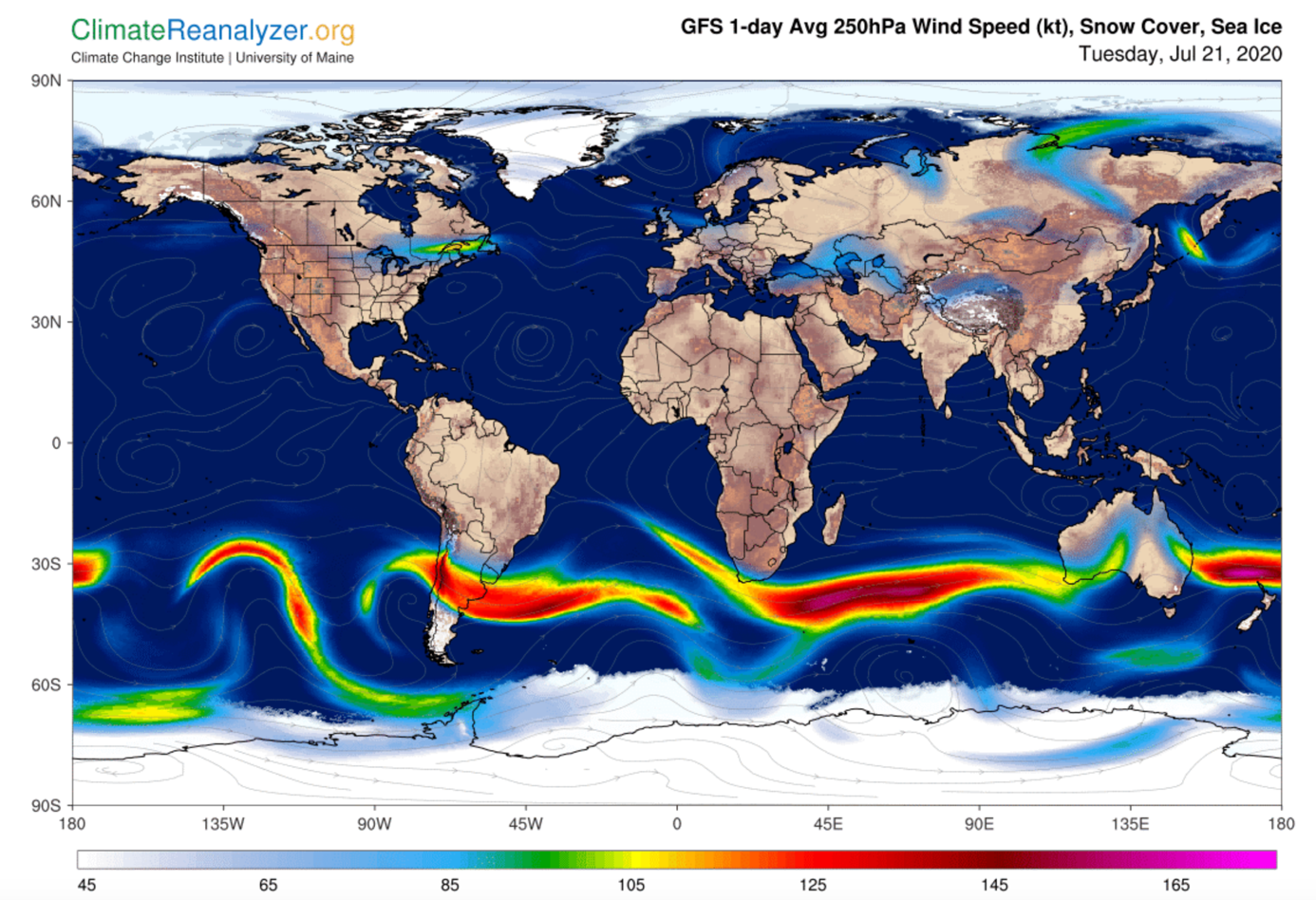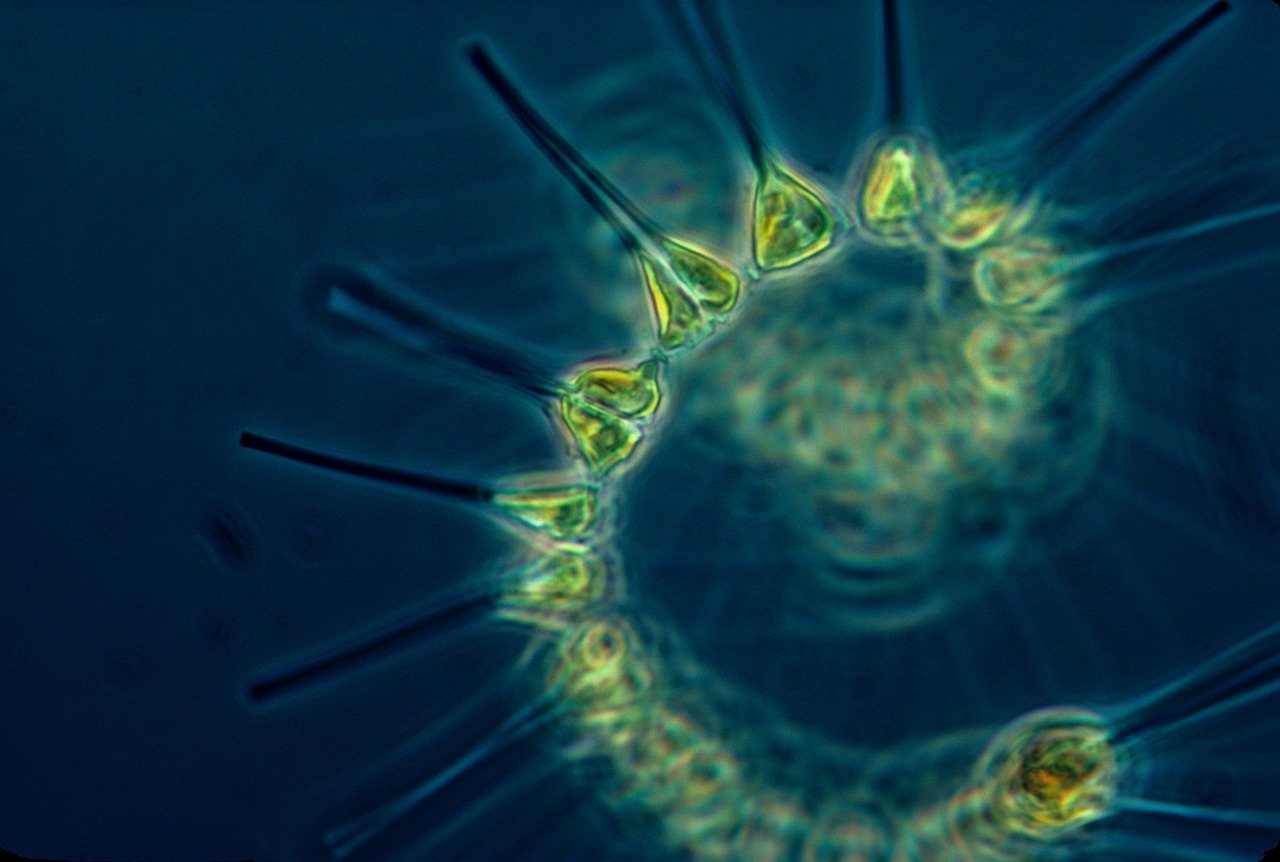Pressemitteilung der University of California – Irvine vom 27.1.2020:
Contradicting prevalent view, UCI oceanographers predict increase in phytoplankton
Machine learning Earth system model projects growth in lower latitudes by 2100
A neural network-driven Earth system model has led University of California, Irvine oceanographers to a surprising conclusion: Phytoplankton populations in low-latitude waters will expand by the end of the 21st century. The unexpected simulation outcome runs counter to the longstanding belief by many in the environmental science community that global climate change will make tropical oceans inhospitable to phytoplankton, which form the base of the aquatic food web. The UCI researchers provide the evidence for their findings in a paper published today in Nature Geoscience.
Senior author Adam Martiny, UCI professor of Earth system science and ecology & evolutionary biology, explained that the prevalent thinking on phytoplankton biomass stems from the expectation of an increasingly stratified ocean. Warming seas inhibit mixing of the heavier cold layer in the deep with lighter warm water closer to the surface. With less circulation between the levels, fewer nutrients reach the higher strata to be accessed by hungry plankton.
“All the climate models have this mechanism built into them, and it has led to these well-established predictions that phytoplankton productivity, biomass and export into the deep ocean will all decline with climate change,” Martiny said. “Earth system models are largely based upon laboratory studies of phytoplankton, but, of course, laboratory studies of plankton are not the real ocean.” Scientists traditionally account for plankton by measuring the amount of chlorophyll in the water, he said. And there is considerably less of the green stuff in low-latitude regions that are very hot compared to cooler regions farther away from the equator.
“The problem is that chlorophyll is not everything that’s in a cell, and actually, in low latitudes, many plankton are characterized as having a very small amount of it. There’s so much sunlight that plankton only need a few chlorophyll molecules to get enough energy to grow,” Martiny said. “In reality, we have so far had very little data to demonstrate whether there is more or less biomass in regions undergoing stratification. As a result, the empirical basis for less biomass in warmer areas is not that strong.”
These doubts led him and his UCI colleagues to conduct their own phytoplankton census. Analyzing samples from more than 10,000 locations around the world, the team created a global synthesis of the main phytoplankton groups in warm regions. The vast majority of these species are very tiny cells known as picophytoplankton. Ten times smaller in diameter than the strains of plankton off the California coast – and 1,000 times less voluminous – picophytoplankton are nonetheless great in number, making up 80 to 90 percent of plankton biomass in most warm areas.
The researchers built global maps and compared the quantity of biomass along the gradient of temperature, a key parameter, according to Martiny. Conducting a machine learning analysis to determine the amount now versus in the year 2100, they found a big surprise: “In many regions, there would be an increase of 10 to 20 percent in plankton biomass, rather than a decline,” Martiny said. “Machine learning is not biased by the human mind,” he noted. “We just give the model tons and tons of data. But these sorts of artificial intelligence tools can help us challenge existing paradigms.”
One of the theories the team explored to explain the growth – with help from co-author Francois Primeau, UCI professor of Earth system science – had to do with what happens to phytoplankton at the end of their life cycle. “When plankton die – especially these small species – they sit around for a while longer. And maybe at higher temperatures, living plankton can more easily degrade them and recycle the nutrients back to build new biomass,” Martiny said.
Such ecosystem features are not easily taken into account by traditional, mechanistic Earth system models, he said, but they were part of the geographically diverse dataset the group used to train its neural network-derived quantitative niche model. Martiny said that this study, following up research published last summer, is further evidence of the variability and resilience of phytoplankton.
“We could, obviously, let climate change get out of hand and go into completely uncharted territory, and then all bets are off,” he said. “But at least for a while, I think the adaptive capabilities in these diverse plankton communities will help them maintain high biomass despite these environmental changes.” Joining Martiny and Primeau were lead author Pedro Flombaum, a former postdoctoral researcher and, later, a visiting scholar in Earth system science at UCI who’s currently an associate professor at Argentina’s University of Buenos Aires; and co-author Weilei Wang, a UCI postdoctoral scholar in Earth system science. The work received support from the National Science Foundation’s 10 Big Ideas program and the U.S. Department of Energy’s Office of Biological and Environmental Research.
Paper: Pedro Flombaum, Wei-Lei Wang, Francois W. Primeau, Adam C. Martiny. Global picophytoplankton niche partitioning predicts overall positive response to ocean warming. Nature Geoscience, 2020; DOI: 10.1038/s41561-019-0524-2
+++
Erderwärmung, Erderhitzung, Erdverbrennung. Das war die Steigerung in den Medien in den letzten Jahren. Ganz offensichtlich hat sich das in den Köpfe vieler Menschen fest verankert. Allerdings sind die Auswirkungen fatal, denn es wird immer mehr gekühlt mit Klimaanlagen. Selbst in privaten Wohnungen sind solche Anlagen mittlerweile Gang und Gäbe. Wer will schon gern in den eigenen 4 Wänden verbrennen? Die WELT berichtet in einem Artikel über die Folgen. Früher wurde im Hochsommer das Fenster nachts aufgemacht und man schlief unter einer leichten Decke. Heute stehen Klimaanlagen in vielen Schlafzimmern. Diese haben einen hohen Stromverbrauch und der führt letztlich zu noch mehr Emissionen. Hier wurden also durch das Trommelfeuer an Superlativen die Lage nicht verbessert sondern verschlimmert. Panik ist also doch kein guter Berater.
+++
Greta Thunberg wird geehrt – mit Ölgeld. Die Umweltaktivistin erhält von der portugiesischen Gulbenkian-Stiftung einen Preis, der mit 1 Million Euro Preisgeld dotiert ist. Die Gulbenkian-Stiftung besaß bis vor kurzem noch die Ölfirma Partex, die sie aber im Juni 2019 an einen thailändischen Käufer für 622 Million Dollar verkaufte. Gegründet wurde das Ölimperium vom Armenier Calouste Sarkis Gulbenkian, der vor mehr als 100 Jahre geschickt in Ölkonzessionen investierte und für seine zahlreichen Kleinbeteiligungen auch „Mr. 5 Prozent“ genannt wurde. Nach dem Verkauf der Ölfirma versucht sich die Gulbenkian Stiftung offenbar neu zu orientieren und sucht daher die Nähe zu Klimaaktivisten. Der gestiftete Preis wird „für besondere Menschlichkeit“ vergeben. In der Jury des Preiskomitees saß übrigens auch Hans-Joachim Schellnhuber, was die Auswahl der Preisträgerin erklärt.
Glück für Greta, dass sie bisher zum eigentlich größten Problem dieser Erde, der Überbevölkerung, noch nichts Wesentliches gesagt hat. Auch da gibt es wissenschaftliche Erkenntnisse, was Energiehunger und die Produktion von Lebensmitteln der Erde an Belastung beschert. Es gibt auch klare wissenschaftliche Stimmen, dass die Probleme nur durch weniger Bevölkerung gelöst werden können. Um es mit den Worten Dieter Nuhrs zu sagen: Wer sagt es den Menschen, dass sie über sind? Das Geld soll an verschiedene Organisationen verteilt werden. Mehr dazu im Spiegel.
+++
Der SPD Gesundheitspolitiker Karl Lauterbach mutiert zum Klimaexperten. Auf Twitter erzählt er in wenigen Worten, warum die Wälder in Sibirien brennen. Es ist der Jetstream oder besser die Hitze, die er mitbringt.

Ist es nicht eher so, dass die Wellen des Höhenwinds die Wärme diesmal begünstigt haben? Überall, wo die Strömung weit nach Süden kommt, ist es kühl. Umgekehrt ist es dort warm, wo der Jetstream im Norden bleibt. Sehr gut ist das momentan im äußersten Osten von Sibirien zu erkennen. Dorthin ist die Wärme gewandert, der Grund ist der Wellenkamm des Höhenwinds. Wunderbar zu sehen auf der Karte von Climatereanalyzer.org.

Der unermüdliche Jörg Kachelmann versucht Karl Lauterbach das mit den Bränden zu erklären. Lauterbach hat in seinem Tweet dazu noch eine weitere diskutable Formulierung. Auch er spricht von Kipppunkten, hat also das Framing aus Potsdam schon in sich aufgesogen. Er sagt allerdings, dass „die gefährlichen Kipppunkte fast unbeeinflussbar sind.“ Meint das jetzt, der Mensch hat gar keinen Einfluss darauf oder, es ist ohnehin egal, was wir jetzt noch machen, es bringt nichts?

+++
Bjorn Lomborg hat soeben sein Buch „False Alarm“ veröffentlicht. Die New York Times hat das Buch hart kritisiert, genauer gesagt, sich an vermeintlichen Fehlern gestört. Nun hat sich Lomborg die Kritik noch einmal vorgenommen und erklärt dem Kritiker, was er alles offenbar nicht verstanden oder (absichtlich?) missverstanden hat. Auf LinkedIn ist seine Kritik an der New York Times Kritik zu lesen.
